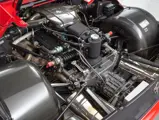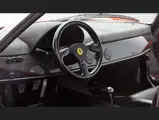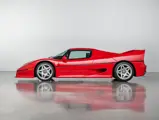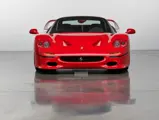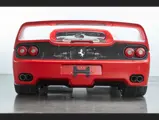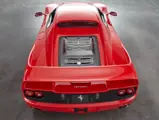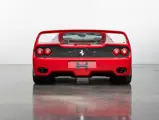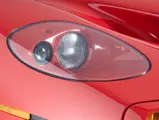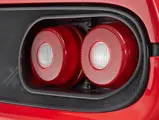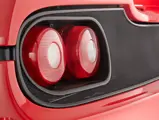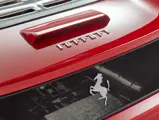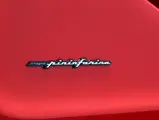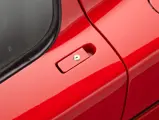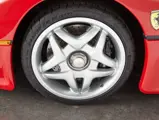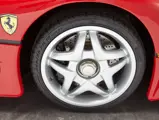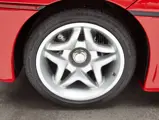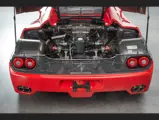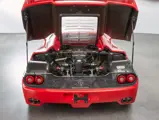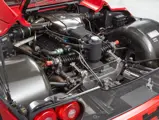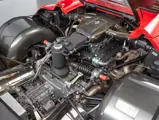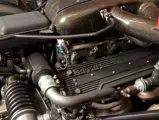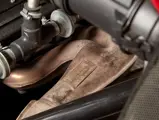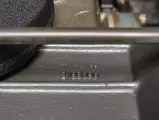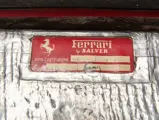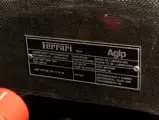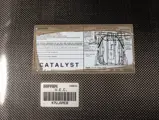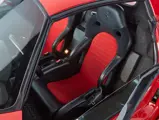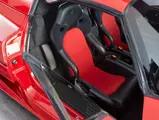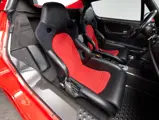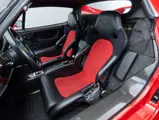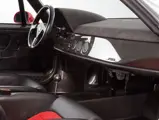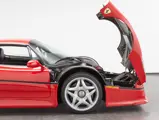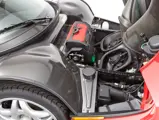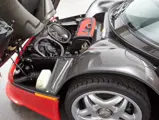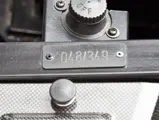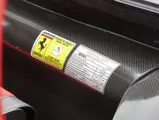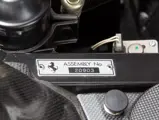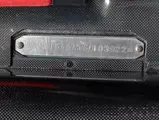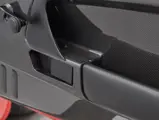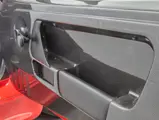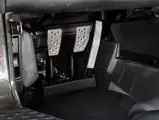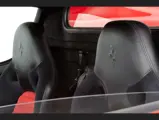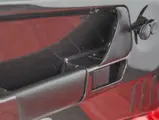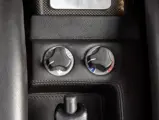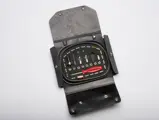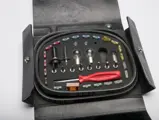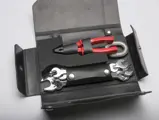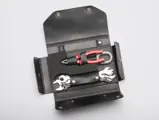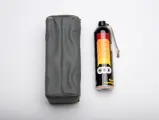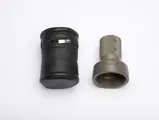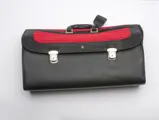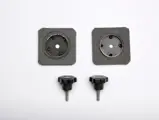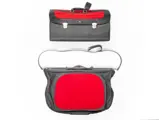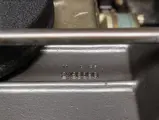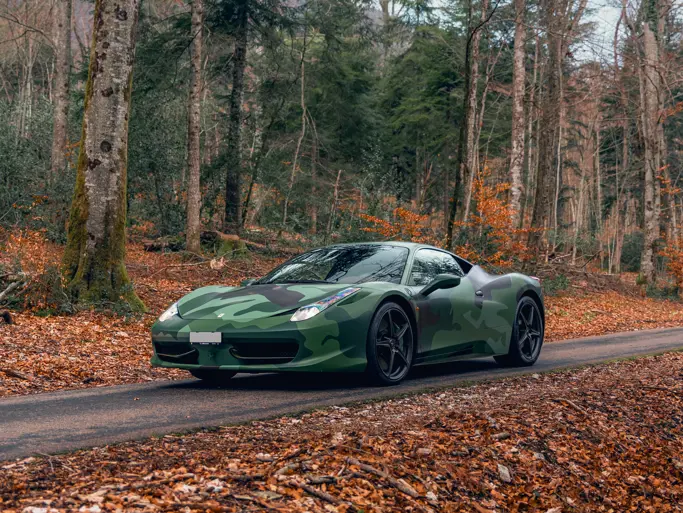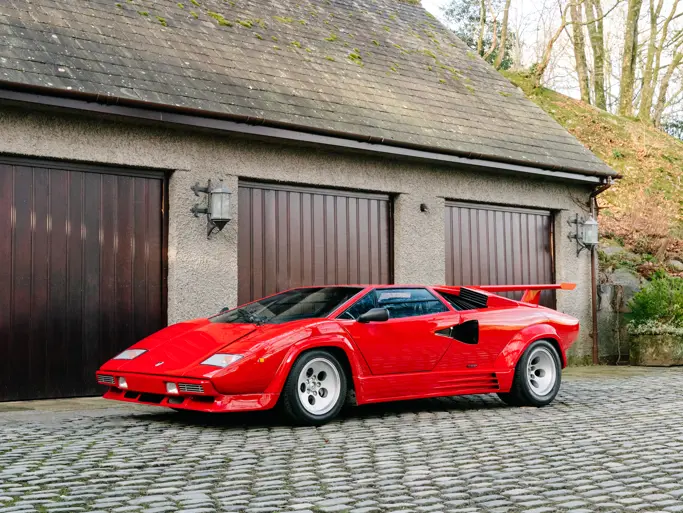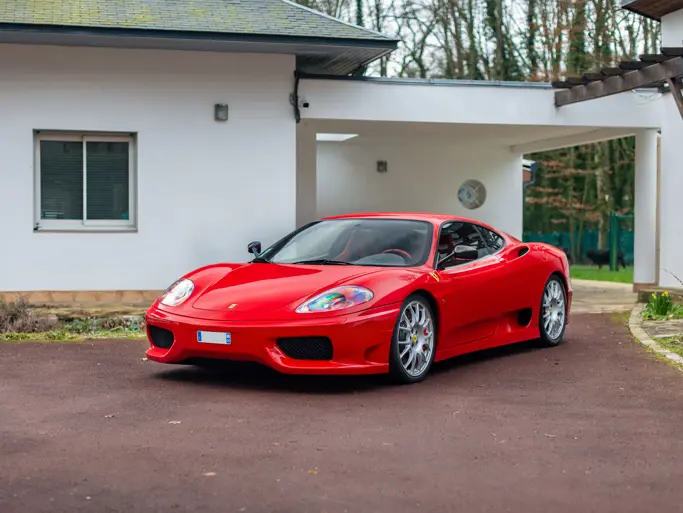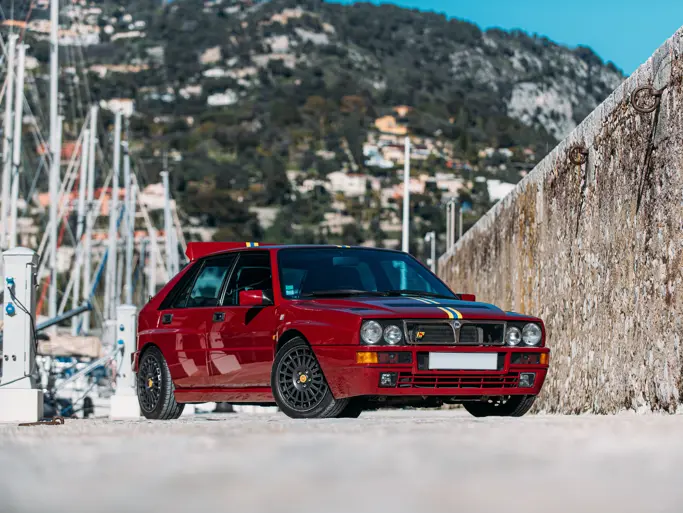Amelia Island 2021
1995 Ferrari F50
{{lr.item.text}}
$3,772,500 USD | Sold
 | Amelia Island, Florida
| Amelia Island, Florida
{{internetCurrentBid}}
{{internetTimeLeft}}

- A very desirable US-spec F50
- The 48th of 349 examples produced; one of just 55 provided to the US market
- Ferrari’s only convertible, manual-transmission supercar
- 4.7-liter V-12 engine directly derived from racing engines used by Scuderia Ferrari in Formula One
- Treated to a major service in June 2018 by Ferrari of San Antonio
The Ferrari F50 was intended as an early celebration of the marque’s 50th anniversary. What bowed under the bright lights of the 1996 Geneva Motor Show was the culmination of everything the automaker had learned over its five decades of existence. The F50’s 512-horsepower V-12 stretched the limits of natural aspiration as it screamed toward its 8,000-rpm redline, while the car’s carbon-fiber tub kept the weight in check. The F50 split the difference between raw Ferraris of the past and the high-tech future.
The F50 could trace its styling roots to the Pininfarina-penned Ferrari Mythos concept presented at the 1989 Tokyo show. That car rode on a modified Testarossa platform, as it was largely a styling exercise. An icon of its era, due in part to being featured in one of the first PC automotive video games, the Mythos was not just a virtual icon: The Sultan of Brunei is known to have commissioned at least two examples, one in red and the other in a decidedly period turquoise.
To create the production F50, Ferrari and Pininfarina turned to wind tunnels. The Mythos’ basic shape remained intact, albeit with a curvier design with projector lights housed under headlight covers, deep air intakes in the front hood, a small passenger compartment, and a massive rear wing that likened it to the F40 that preceded it. Enormous, center-locking, 18-inch magnesium alloy wheels supplied by Speedline took the Campagnolo look from the 1980s into a new decade.
The shapely body was created from carbon fiber and was wrapped over a tub created from the same material. Solid mounts held the race-derived 4.7-liter V-12 into the car. The V-12 itself was closely related to the engine that powered Alain Prost’s Ferrari 641 Formula 1 race car to five checkered flags during the 1990 racing season.
The 65-degree V-12 was placed just ahead of the rear axle. A carbon-fiber-reinforced polymer intake supplied air, while fuel was held in an aircraft-grade Sekur fuel-tank bag to keep weight to an absolute minimum. A longitudinal six-speed manual transmission shuttled power rearward to a limited-slip differential. Cooling came via an oil-water intercooler sandwiched between the transmission’s lubrication system and the engine.
Underneath, the F50 utilized rose-jointed unequal-length wishbones front and rear. Bilstein was tasked with creating electronically adaptive dampers to make what was essentially a Formula 1 car with windshield wipers and a passenger seat. Unassisted power steering ensured that the F50 would live up to its predecessors. After all, the F50 was never designed to scrub mileage as it dashed across the continent. Gigantic Brembo brakes guaranteed that the F50 would come to a halt quickly after reaching its 202 mph top speed.
Ferrari made no effort to soften the F50 inside, either. Its dashboard was nearly unadorned, consisting of a carbon-fiber panel punctuated by three climate vents. Exposed carbon fiber was visible throughout, which, along with the manual window winders, served to remind occupants that the F50 was an exercise in weight reduction. Unladen, the car tipped the scales at just over 3,000 pounds, a remarkable feat given the power underhood, its relatively long 101.6-inch wheelbase, and the fact that the car’s structure was stiffened considerably because Ferrari chose to include a removable targa roof over the passenger compartment.
Put to the test, the F50 was four seconds faster around the course at Fiorino than the F40 that preceded it. Even Ferrari’s then-president, Luca di Montezemolo, gushed with praise. He told Motor Trend in a 1995 review that the F50 would be “the first and last Formula 1 car with two seats.”
CHASSIS 103922
The F50 hit the American market with an unusual lease program designed to prevent speculators profiting shortly after the model’s release. Of the 349 examples claimed to have been built, just 55 were earmarked for the American market, including the car offered here: Chassis 103922.
103922 is the 48th F50 produced; assembly was completed at Maranello on 15 December 1995 and the car was delivered shortly thereafter to Ferrari of North America in Englewood Cliffs, New Jersey. That same month, 103922 was sold new to American-Italian businessman, noted collector, and close friend of Horacio Pagani, Benny Caiola, via Wide World Ferrari in Spring Valley, New York. Caiola is said to have greatly enjoyed his F50, preferring it over all the other pieces of his vast and remarkable collection (notwithstanding his two Paganis). 10392 enjoyed residence and regular exercise within Caiola’s collection until his passing in 2010. The Caiola estate sold 103922 in February 2011, then showing approximately 4,000 miles accumulated during Benny’s 15 years of ownership.
103922 was thusly acquired by a Texas-based collector, who had the car regularly maintained by Ferrari of San Antonio during the course of his careful custodianship. In June 2018, with the car then indicating approximately 5,100 miles, this F50 was treated to a major “engine-out” recommended maintenance regimen which provided the 4.7-liter V-12 with a full suite of requisite gaskets, belts, seals, filters, and consumables. Additional maintenance invoices on file from Ferrari of San Antonio illustrate a saga of fastidious ownership. 103922 is now accompanied by its original owner’s manuals, service invoices, tool kit, hardtop, two pieces of luggage, and photos documenting the aforementioned major service completed in 2018.
The F50, lauded as the last, and only, convertible six-speed manual Ferrari supercar, has very few peers. It combines cutting-edge, Formula 1-derived innovation and technology with a road-car platform. As the final generation of modern-day supercars equipped with manual transmissions begins to gain value in the collector car market, the F50 presents itself as not only an excellent-to-drive limited-production automobile, but also a very important model in Ferrari’s illustrious history.



